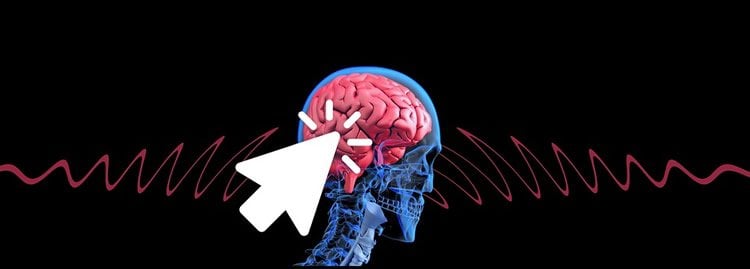Summary: A new study investigates how the a specific brain network tracks the location and speed of an object, helping animals to prepare for imminent impact.
Source: SfN.
A neuroimaging study of two monkeys published in JNeurosci identifies a brain network that tracks the location of an object approaching the face and anticipates its potential consequences upon making contact with the body.
Using functional resonance magnetic imaging in two resus monkeys, Suliann Ben Hamed and colleagues found a brain network linking occipital, parietal, premotor and prefrontal regions that is maximally activated when a virtual cone rapidly approaching the monkey was paired with a puff of air to the monkey’s cheek, delivered when the object would be expected to reach the face in a real-world setting.
Activation of this network was weak when there was a mismatch between the air puff and the location of the cone, or when either stimulus was presented by itself.
This finding suggests that the network actively used visual and to predict tactile information and enhance its processing, which may help the animal prepare for an imminent impact.

Source: Anne Holden – SfN
Image Source: NeuroscienceNews.com image is credited to Ning Qian/Columbia’s SfN.
Original Research: Abstract for “The prediction of impact of a looming stimulus onto the body is subserved by multisensory integration mechanisms” by Justine Cléry, Olivier Guipponi, Soline Odouard, Serge Pinède, Claire Wardak and Suliann Ben Hamed in Journal of Neuroscience. Published online October 9 2017 doi:10.1523/JNEUROSCI.0610-17.2017
[cbtabs][cbtab title=”MLA”]SfN “Watch Out! Brain Network Calculates Impact of Approaching Object.” NeuroscienceNews. NeuroscienceNews, 9 October 2017.
<https://neurosciencenews.com/impact-object-7699/>.[/cbtab][cbtab title=”APA”]SfN (2017, October 9). Watch Out! Brain Network Calculates Impact of Approaching Object. NeuroscienceNews. Retrieved October 9, 2017 from https://neurosciencenews.com/impact-object-7699/[/cbtab][cbtab title=”Chicago”]SfN “Watch Out! Brain Network Calculates Impact of Approaching Object.” https://neurosciencenews.com/impact-object-7699/ (accessed October 9, 2017).[/cbtab][/cbtabs]
Abstract
The prediction of impact of a looming stimulus onto the body is subserved by multisensory integration mechanisms
In the jungle, survival is highly correlated with the ability to detect and distinguish between an approaching predator and a putative prey. From an ecological perspective, a predator rapidly approaching its prey is a stronger cue for flight than a slowly moving predator. In the present study, we use functional magnetic resonance imaging (fMRI) in the non-human primate, to investigate the neural bases of the prediction of an impact to the body by a looming stimulus, i.e. the neural bases of the interaction between a dynamic visual stimulus approaching the body and its expected consequences onto an independent sensory modality, namely, touch. We identify a core cortical network of occipital, parietal, premotor and prefrontal areas maximally activated by tactile stimulations presented at the predicted time and location of impact of the looming stimulus on the face, as compared to the activations observed for spatially or temporally incongruent tactile and dynamic visual cues. These activations reflect both an active integration of visual and tactile information and of spatial and temporal prediction information. The identified cortical network coincides with a well described multisensory visuo-tactile convergence and integration network suggested to play a key role in the definition of peripersonal space. These observations are discussed in the context of multisensory integration and spatial, temporal prediction and Bayesian Causal Inference.
Significance statement:
Looming stimuli have a particular ecological relevance as they are expected to come into contact with the body, evoking touch or pain sensations and possibly triggering an approach or escape behaviour depending on their identity. Here, we identify the non-human primate functional network that is maximally activated by tactile stimulations presented at the predicted time and location of impact of the looming stimulus. Our findings suggest that the integration of spatial and temporal predictive cues possibly rely on the same neural mechanisms that are involved in multisensory integration.
“The prediction of impact of a looming stimulus onto the body is subserved by multisensory integration mechanisms” by Justine Cléry, Olivier Guipponi, Soline Odouard, Serge Pinède, Claire Wardak and Suliann Ben Hamed in Journal of Neuroscience. Published online October 9 2017 doi:10.1523/JNEUROSCI.0610-17.2017






